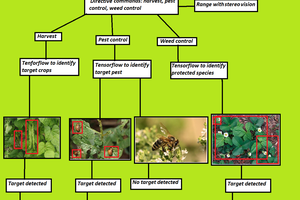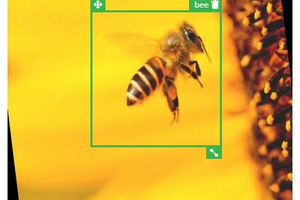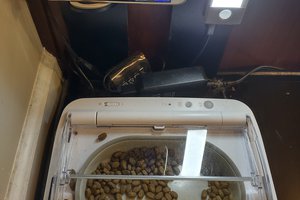To do this, we will need
- downloaded neural network facenet
- computer
- keras
- opencv
- source code beetlea/face_reco_camera (github.com)
From the beginning we import dependencies
from keras.models
import load_model
import numpy as np
from keras.utils
import plot_model
import math
import glob
import os
import cv2
import serial
Then we load the grid and specify the path for the face detector
model_path = 'facenet_keras.h5'
model = load_model(model_path)
cascade_path = 'haarcascade_frontalface_alt2.xml'
A function that formats an image and runs it through a neural network
def calc_embs(imgs, margin, batch_size):
fram1e = cv2.resize(imgs,(160,160))
ofg2 = np.array(fram1e)
aligned_images = prewhiten(ofg2)
pd = []
x_train = np.array([aligned_images])
embs1 = model.predict_on_batch(x_train)
embs1.reshape(1,-1)
embs = l2_normalize(np.concatenate(embs1))
return embs
A function that, when a button is pressed for the first time, saves the face of a person who has passed through the neural network, and the second time, having driven a new face through the network, compares it with the saved one
def reco_face(frame, i):
#frame = cv2.cvtColor(frame, cv2.COLOR_BGR2RGB)
img = frame
#i = 0
h = 0
v = 0
u = 0
name_out = 'i dont know you'
#print(ofg.shape)
#img = search_face(img, frame, face_cascade)
#frame = cv2.cvtColor(frame, cv2.COLOR_BGR2RGB)
faces = face_cascade.detectMultiScale(frame, 1.3, 5)
print(faces)
if faces == ():
v = 5
# Loop through all the faces detected and determine whether or not they are in the database
identities = []
for (x, y, w, h) in faces:
x1 = x-PADDING
y1 = y-PADDING
x2 = x+w+PADDING
y2 = y+h+PADDING
frame = cv2.rectangle(frame,(x1, y1),(x2, y2),(255,0,0),2)
height, width, channels = frame.shape
# The padding is necessary since the OpenCV face detector creates the bounding box around the face and not the head
part_image = frame[max(0, y1):min(height, y2), max(0, x1):min(width, x2)]
if i == 1:
pre[0:] = calc_embs(part_image,10,1)
while u!=1:
u = ser.write( b'P')
u=0
else: ofg = calc_embs(part_image,10,1)
#print(ofg)
#i = i + 1
if i > 1:
for m in pre:
dot = np.sum(np.multiply(m, ofg), axis=0)
norm = np.linalg.norm(m, axis=0) * np.linalg.norm(ofg, axis=0)
similarity = dot / norm
dist1 = np.arccos(similarity) / math.pi
if dist1<0.32:
print(dist1)
h = 1
return h,v
Well, the main. It all starts with the arduino, when the letter B is fed through the uart, which means that the button is pressed. Next, a command is sent to the arduino to open the drawer and the face recognition and preservation function is launched. Then, if the command to press the button came from the arduino again, we run the recognition function again and if the faces converge, then open the box.
ser = serial.Serial('COM3', 9600, write_timeout=1, timeout=0.1)
print(ser.name)
# check which port was really used
cap = cv2.VideoCapture(0)
zz = 0
while(True):
ret, frame = cap.read()
frame1 = search_face(frame)
cv2.imshow('ffff', frame1)
ff=ser.read(1)
if(ff == b'B'):
print("press_button")
ff = b'u'
zz = zz + 1
mmm, f = reco_face(frame, zz)
if f == 5:
zz = 0
print(mmm)
if mmm == 1:
print("otkrivaio")
while u!=1:
u = ser.write( b'P')
u=0
h = 0
zz = 0
if cv2.waitKey(33) == ord('q'):
break cap.release()
cv2.destroyAllWindows()
 Anton Zhukov
Anton Zhukov
 Dennis
Dennis
 Rahul Khanna
Rahul Khanna
 Nick Bild
Nick Bild